As we continue to enjoy nature close to home, we’ve asked NHSN members to tell us about their favourite field guides for the garden or on nearby walks. In this post, local naturalist Julia Black recommends guides for identifying plants.
Field guides for plants
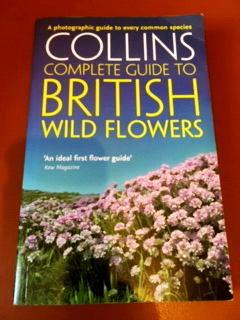 Collins Complete Guide to British Wildflowers
Collins Complete Guide to British Wildflowers
By Paul Sterry. HarperCollins, 2006.
320 pp. Colour photos.
This guide covers approx. 1100 species of wildflower including grasses, sedges and rushes but excludes trees. The guide is organised by families.
Left hand pages have text with details of habitat, flowers, leaves and fruits and a small distribution map for each species. Right hand pages have high quality photographs.
There is a useful glossary of terms used, brief descriptions of flower structure, fruit and seed types and leaf shapes, and descriptions of different types of habitat.
There is a handy short cut to flower identity (using for example number of petals or flower type) to help get you to the right section of the book, but you then have to work through the photos to try and pinpoint your plant, there are no keys.
I think this would be an ideal guide for a beginner: it’s very comprehensive covering a large number of species, and using photographs means it’s easier to compare with what you’re looking at in the field. It can be a bit frustrating when the photographs don’t include all parts of a plant that might help you identify it accurately.
Learn more about this guide at HarperCollins.
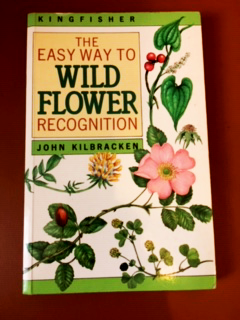 The Easy Way to Wildflower Recognition
The Easy Way to Wildflower Recognition
By John Kilbracken. Kingfisher Books Ltd., 1989.
This guide uses a simple key to help you identify approx. 200 wildflowers found in Britain and Ireland. It uses ‘Yes/No’ questions about features of the flower (for example, what colour are its flowers; how do the leaves grow; how big are the flowers) with explanations of any terms used (for example, what is a composite leaf) to lead you to an answer. Once you arrive at the answer, there is a brief description with a colour illustration that includes leaves.
I think this would also be an ideal guide for a beginner: the key is very straightforward to use and the explanations of technical terms are very clear. By only covering 200 wildflowers, it has a very limited scope.
This book is out of print but used copies are available from online retailers.
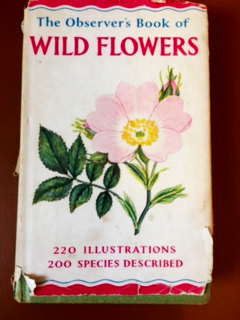 Observer Book of Wildflowers
Observer Book of Wildflowers
Complied by W.J. Stokoe. Frederick Warner & Co., London, 1963.
224 pp.
I purchased my copy fairly recently to add to my childhood collection of Observer books and got it off eBay for £5.99.
This little guide describes 200 species of wildflower that might be found during a walk in open country. The short introduction includes an explanation of the parts of a flower, and there is a glossary with explanations of terms used and drawings where appropriate.
The book is organised by family, and there is a page for each species including an illustration (about half of which are in colour) and details of habitat, distribution and key features of leaves and flowers.
This is definitely aimed at the beginner: it is very easy to simply leaf through the book to locate your plant. The black and white illustrations are less helpful than the colour ones.
This book is out of print but used copies are available from online retailers.
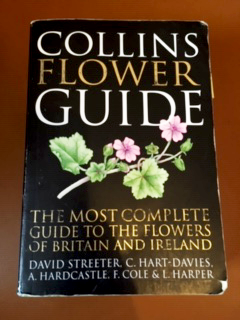 Collins Flower Guide: The Most Complete Guide to the Flowers of Britain and Europe
Collins Flower Guide: The Most Complete Guide to the Flowers of Britain and Europe
By David Streeter et al. HarperCollins, 2010.
704 pp. 1400 colour illustrations and black & white line drawings
This guide describes over 1900 species in Britain and Ireland and includes flowering plants so trees, shrubs, grasses, sedges and rushes as well as conifers, ferns and their allies.
It is organised in taxonomic order, and includes detailed keys to help identification within families that contain multiple species. The keys include drawings to explain technical terms, and there is a glossary. It is essential to have a hand lens to identify various features to be able to use the keys.
There is a section on the structure of a flower and types of inflorescence.
There is a very handy key to the top 20 families of flowering plant (approx. 70% of species belong to just these families), you are then directed to the key for that family. You could try to locate your plant simply by scanning the illustrations but they are not particularly useful for this purpose. Each species has a paragraph with details of habit, flowers, leaves, distinguishing features, habitat and distribution though there are no distribution maps.
I think this guide is suitable for the more experienced botanist. With 704 pages, it is not really feasible to leaf through the pages looking for the plant you wish to identify, plus the illustrations are not really good enough for this purpose. You really need to be comfortable with using keys, and understanding the structures and terms used in the keys. Weighing over 1kg may put some people off thinking this is a ‘field’ guide, but to my mind, it is the best guide available and together with a hand lens, an essential field companion.
Learn more about this guide at HarperCollins.
Plant identification for beginners
If I were to choose one guide for beginners, I think I would choose the Collins Complete Guide to Wildflowers. It is quite comprehensive (with the exception of trees) and the short cuts to flower identity, and use of proper photographs makes it very useable.
For beginners, I would also recommend the Botanical Society of Britain & Ireland website for excellent resources which include id sheets and what plants to spot month-by-month.
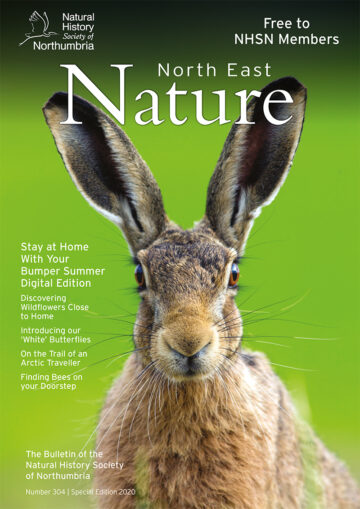 Field guides to inspire you
Field guides to inspire you
This post is an extended version of “Field Guides to Inspire You,” featured in our Summer 2020 Special Edition of North East Nature. This special digital-only issue is available to everyone.
See our full series of Field Guides blog posts for more recommendations.